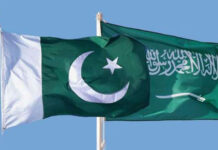ISLAMABAD: The total public debt of Pakistan was recorded at Rs67,525 billion at the end of March 2024, a significant increase from Rs59,247 billion in March 2023, according to the Economic Survey 2023-24.
The domestic debt up to March 2024 was Rs43,432 billion, while the external public debt during the same period was Rs24,093 billion.
Details from the Economic Survey indicate that the total public debt at the end of the fiscal year 2020-21 was Rs39,861 billion. This figure rose to Rs49,242 billion in 2021-22 and to Rs62,881 billion at the end of the last fiscal year. For the nine months of the current fiscal year, it stands at Rs67,525 billion.
The Economic Survey highlighted positive developments in the public debt portfolio during the first nine months of the outgoing fiscal year. Notably, 88 percent of the fiscal deficit was financed through domestic markets, with only 12 percent sourced externally.
Within domestic debt, the government relied on long-term securities, primarily floating rate Pakistan Investment Bonds (PIBs) and Sukuk, for financing its fiscal deficit and repaying debt maturities. Additionally, the government retired Treasury Bills (T-bills) amounting to Rs0.8 trillion, reducing short-term maturities.
To enhance competitiveness and transparency in debt management and diversify the investor base, amendments were made to the Treasury Bills Rules, 1998, and Ijara Sukuk Rules, 2008. As a result, the government conducted its maiden auction of 1-year fixed rate Ijara Sukuk on the Pakistan Stock Exchange (PSX) in December 2023, shifting the entire Sukuk auction system to the PSX.
The Fiscal Responsibility and Debt Limitation (FRDL) Act 2005 defines “Total Public Debt” as the debt owed by the government, including the Federal Government and Provincial Governments, serviced out of the consolidated fund, and debts owed to the International Monetary Fund.
The external public debt for the nine months of the current fiscal year was $86.68 billion, up from $84.05 billion at the end of the last fiscal year. Key sources of Pakistan’s external public debt include loans from multilateral development partners like the IMF (53 percent) and bilateral countries (21 percent). These loans are concessional, featuring long tenors and low-interest rates. Deposits from China and Saudi Arabia account for 10 percent of the external debt, but these are short-term loans for balance of payments and budgetary support.
Foreign commercial bank loans, which constitute around 6 percent of the total, are generally short-to-medium term with market-based interest rates. International capital market transactions in the form of Eurobonds and international Sukuk represent 9 percent, signifying long-term debt with market-based interest rates. Other sources, such as Naya Pakistan Certificates, non-resident investment in government securities, and Pakistan Banao Certificates, make up about 1 percent of the total external debt.
The Economic Survey emphasized that the primary objective of public debt management is to meet the government’s gross financing requirements at the lowest possible cost over the medium to long term, while maintaining a prudent degree of risk.
The government’s strategy to reduce its debt burden includes running primary budget surpluses, maintaining low and stable inflation, adopting an exchange rate regime based on economic fundamentals, and ensuring fiscal discipline through revenue mobilization and expenditure rationalization.























